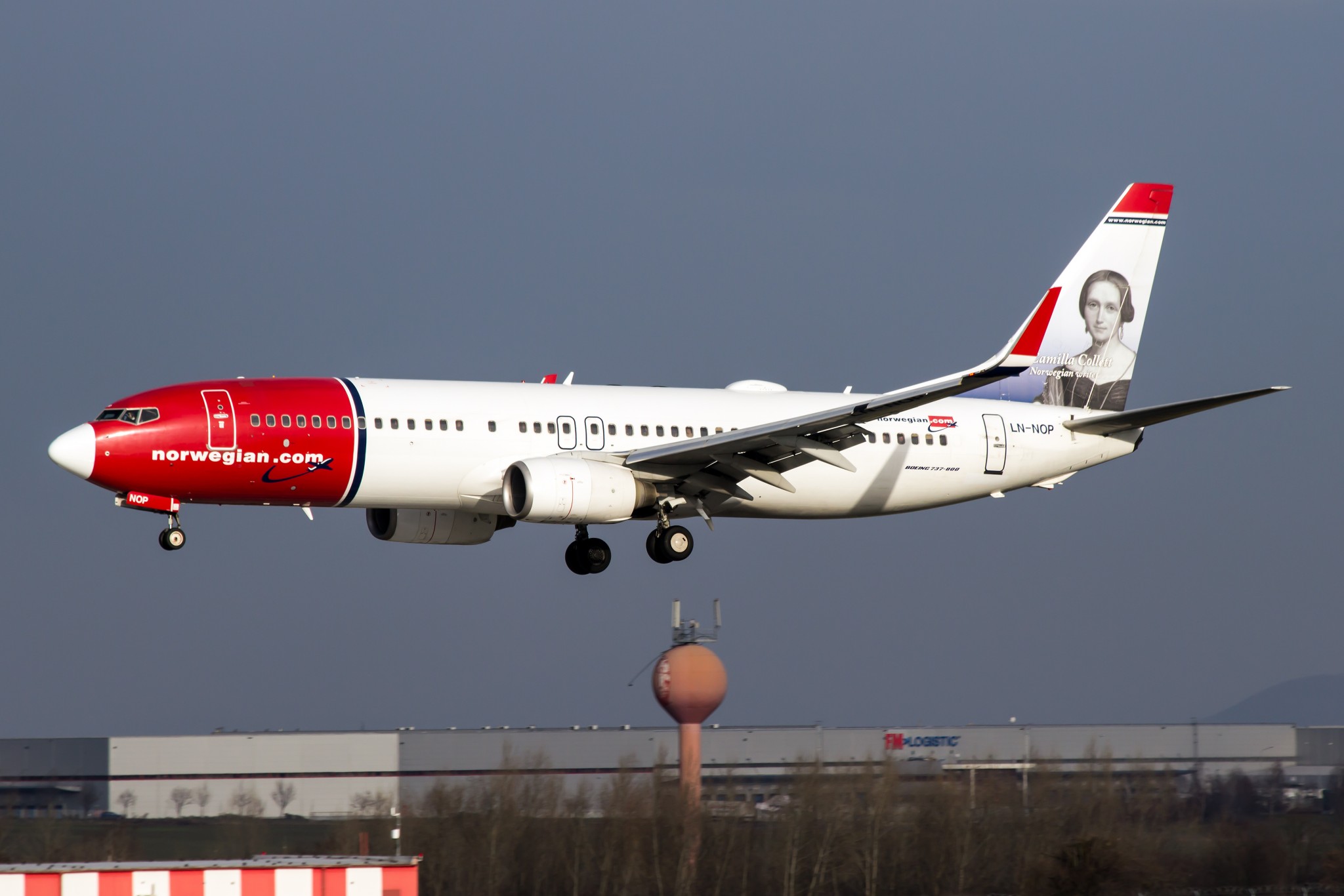Aviation investors are up in arms about the Stalking Horse bid launched by VMO Aircraft Leasing (VMO) – the new leasing company set up with the backing of Ares’ Private Equity Group in January 2021 – for the ten Boeing 737-800 owned by Norwegian Air Shuttle’s (NAS) Enhanced Pass Through Certificates, Series 2016-1A, which are currently on lease to Norwegian Air International.
Norwegian had rejected the leases under Irish examinership but is understood to have made an offer for reduced terms for the aircraft, which would have repaid the A certificate holders but impaired the investors holding the B paper. Sources suggest however that investors believed that the renegotiated offer was worth considering, especially in the current environment where few aircraft are flying and demand for leased aircraft is depressed. Nevertheless, and even though the assets were not formally in default, VMO initiated an auction process for the aircraft.
Under standard EETC documents, subordinated investors can exercise the right to buyout the senior tranches and effectively become the controlling party. VMO used the secondary market to buy a majority of the B certificates – understood to be approximately 70% – and then exercised the right to buyout the A certificate holders, which is all perfectly acceptable under the contract. However, the next move to initiate an auction to sell the secured assets even though the aircraft are not in default by the lessee, is more unorthodox. Investors are claiming that the auction process itself is deeply flawed because it is beneficial only to the Stalking Horse bidder – VMO.
The VMO Stalking Horse bid offers to purchase the aircraft portfolio for: the total amount of principal and interest owed on the class A certificates on the date of the foreclosure sale; cash sufficient to reimburse the subordination agent, the class A trustee, the class B trustee, the liquidity providers and any certificate holder for fees, expenses; and cash sufficient to pay the liquidity providers. More unusual are the special conditions potential bidders are expected to meet, including being required to sign a confidentiality agreement, to provide evidence of their ability to execute the transaction and to timely acquire the aircraft, as well as submit a minimum bid which is equal or greater than the Stalking Horse bid (deemed to be $250 million) and pay the $25million “break-up fee” to the Stalking Horse bidder, as well as a minimum overbid increment in the case of more than one qualified bidder.
The principal outstanding at the time of the VMO buyout was $228.8 million for the class A certificates and $52 million for the class Bs. Fitch estimates that the 737s in this portfolio would need to sell for approximately $23.5 million per aircraft for the class A certificates to recover fully after accounting for liquidity facility obligations and other costs. The aircraft would need to sell for closer to $29 million each for the class Bs to be made whole. Recent post-default appraisals peg current market values for 2016 vintage 737-800s between $24 million-$29 million per aircraft, says Fitch.
The Stalking Horse bid for $250m – £25m per aircraft – is on the low side but would repay the senior tranche. However, investors and other aviation financiers argue that the minimum bid including the break fee and the other more restrictive terms than have been seen before in aviation-related auctions as well as the short timeframe for the auction, make the auction process uneconomical for other bidders.
“Potential bidders are not bidding because the fee and the minimum price together make it too expensive,” says one source. “They think the whole process is odd. Signing a confidentiality agreement and proving you are capable of closing a deal before you even bid is something that they have never been asked before so they just decided to drop it. The compressed timeframe to sell 10 aircraft in a block in a month and in this market is crazy. You’ve got to try and sell them piecemeal because it’s a tough market. Everything they’re doing is designed to discourage bidders rather than encourage them.”
This entire process has been described as “unprecedented for the aviation industry” with others going so far as to question its legality. The aviation finance and leasing community is relatively small and extremely interconnected so the debate over this has been steadily building since the bid was launched at the beginning of March. The fact that the Stalking Horse bid has been launched by a new company – albeit staffed by industry veterans – backed by an alternative credit investor has not been welcomed by the larger community. One said: “This is a small market. What is occurring is a new participant in the sector and in these instruments [EETCs] applying a fairly aggressive approach to locking down aircraft for its new leasing platform that they hope to lease out to the same people that are utilising those products in an environment where there are supposedly protections in place that are designed to protect subordinated certificate holders.”
Certain subordinated investors are believed to be preparing litigation especially in light of the fact that the deadline for bids closes at the end of March, with no bidders reported to be participating. There is some debate over whether this more aggressive process is legal. One source states that it raises questions over the application of the Uniform Commercial Code (UCC), which assumes that any sale must be reasonable and open.
“No other bids came in on the Norwegian aircraft,” says one source, “so by design, they were able to lock down the profits for themselves. What they’ve effectively done is engineered a sale, which requires a fight around whether the single plan is in compliance with UCC. And that requires a lawsuit.”
The cost of a lawsuit from the subordinated investors would likely be more than what they could recoup on their investment. And there are many questioning whether any investor would be willing to “throw good money after bad”. In this case, the furore it has whipped up in the relatively small aviation finance community indicates that they would be willing to challenge the process on a matter of principle. Proving any infraction of the UCC would depend on the sale process and whether bidders were put off by the high price for the assets. Another source states that the fact there are no bidders for such liquid assets such as 2106-vintage 737-800s will only require comparisons with recent sales for similar aircraft where bidding has been competitive.
At the time of this publication’s deadline, VMO had not yet responding to repeated attempts by Airline Economics to contact them about the auction and their Stalking Horse bid approach. However, other prominent market sources have defended the process. One said that such an approach is “not unusual in the world of alternative credit” and that a more aggressive approach is “an unavoidable reality” and that “the industry needs to embrace a new source of capital and with that, people will have to accept, perhaps not a completely new rule book, but certainly some new technology and some new ways of doing things. That should be welcomed as a positive development of the industry and people should see it as a path to being returned to economic health in the way that it has done for the shipping industry”.
It is important to remember that subordinated classes carry more risk and are priced accordingly so some view this entire process as an almost inevitable consequence of the stressed scenario of the airline lessee and the broader marketplace. Another source says that the A certificate holders are being fully paid out (which is debated by another source but that remains to be seen) and that the structure is working as it was intended. There are a lot of grey areas in this process. Another source described the ability of a new investor taking control of the creditor process in such a manner as a “loophole” that will be fixed in time by “clever bankers”. Others state that the use of the term “loophole” is inaccurate for such standardised documents and note that there will always be certain stressed situations where the more “aggressive investors will look very careful at the line documentation to maybe push the envelope in terms of what’s allowed to potentially squeeze out junior investors”.
Some vocal critics of this entire process claim that if it is allowed to run to fruition that it will severely impact the ability and desire of investors to buy subordinated aviation paper in future deals. On a more extreme basis, another source states that it may impact the ratings of subordinated tranches of other existing EETC deals. Others say that this is a more isolated incident and that there will be no lasting impact, or that it will prompt a developing theme in the broader market.
The Norwegian situation – as well as the LATAM EETC aircraft portfolio auction, which is reported to have followed a similar process – is limited in scope since they are not regular EETC issuers. “People will look at that very carefully what the impact may be going forward but the market is very liquid so I don’t think there’s a generalisation to be made that all structures will be changed going forward now to protect for that in the future – it will be more on a case by case basis,” says one source. “If this was a frequent EETC issuer who would be doing a lot more deals in the future, there may be more discussion around documentation changes, but it’s too premature for that.”
This case is still ongoing but as the pandemic crisis continues to restrict airlines’ ability to generate revenue, more distressed assets will likely enter the market attracting new and more aggressive market players. “We’re going to see traditional investors put off aviation finance products,” says one source. “They will certainly look again at EETC and ABS E-note products but such distress will lead to a level of increased financial hygiene and maybe more detailed reviews of the products”. The same source expects a more aggressive post-pandemic environment which will include more uncompromising situations like Stalking Horse bids and enforcement actions. “We’re not there yet. People are not taking the metal back from airlines because there are few places to place them. But many are already mapping enforcement strategies to acquire debt purely to gain control of cut-price assets. That sort of shake out will be painful, but it will probably the re-map the way back to some sort of financial health for the industry.”
The legal battles are only just beginning for this process but the conflict behind the scenes appear to be well advanced in this case with reports of long-standing business relationships breaking down. As one source says: “Aviation is such a small industry. Everyone knows each other; everyone gossips about each other, and there will be an impact.”







